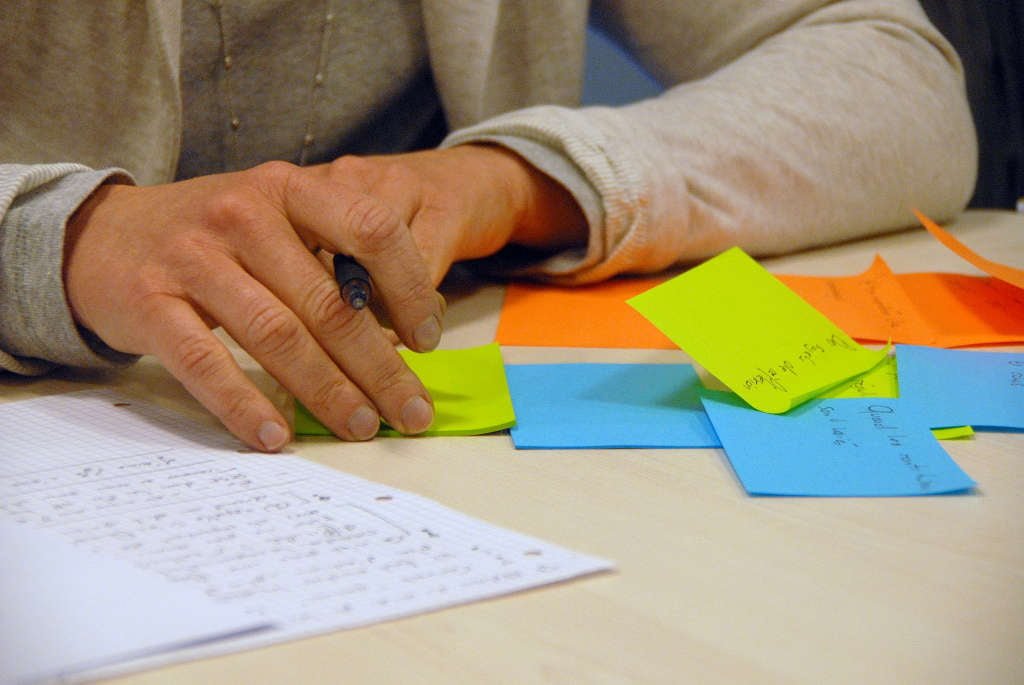In this post, I want to point you to some recent research into alternating group and individual brainstorming using brainwriting. Recent studies suggest that so-called hybrid brainwriting leads to more ideas than both group and individual brainwriting.

This is good news because several prior studies have indicated that individuals brainstorming by themselves tend to generate more ideas than groups containing these individuals. Hybrid brainwriting is straight-forward; you can use it right away to generate more and better ideas.
Traditional group brainstorming is somewhat of a double-edged sword.
We organize brainstorming groups with members from different fields to create synergy. That is, we hope that by building on other’s ideas, participants can come up with more unique and better ideas. Almost every one of us has shared a problem with a good friend and by bouncing ideas, come up with something they wouldn’t have been able to think up by themselves.
What’s more, group brainstorming leads to a better acceptance of ideas and helps to communicate them to fellow team members.
Generating ideas is only the first step; subsequently ideas have to be evaluated, developed further, and ultimately implemented.
You can’t do it alone: great products and systems are usually the work of great teams.
On the other hand, controlled for time, face-to-face brainstorming groups often generate fewer ideas than so-called nominal groups (the pooled ideas coming from a comparable number of individual “brainstormers”).
And what is important here: studies have also indicated that the more ideas are generated, the more good ideas are generated!
Why do face-to-face brainstorming groups come up with fewer ideas than teams where everyone brainstorms individually?
Here are the three most common reasons for the drop in productivity.
1. In groups, only one person can speak their idea at a time. Others have to wait for their turn. What’s more, by attending to someone else’s idea and hoping to expand on it, you are interrupting your own train of thought.
2. Despite being assured by the brainstorming rules that criticism is not allowed and that wild and crazy ideas are encouraged, individuals might withhold ideas for fear of being negatively evaluated by their peers or their boss (who might also attend the session).
3. In a group activity, there is less individual accountability: some participants might not pull their weight.
However, there are approaches to brainstorming that do not have these short-comings: one of them is brainwriting.
What is brainwriting?
Read moreAlternating Group and Individual Brainwriting: Together and Alone
